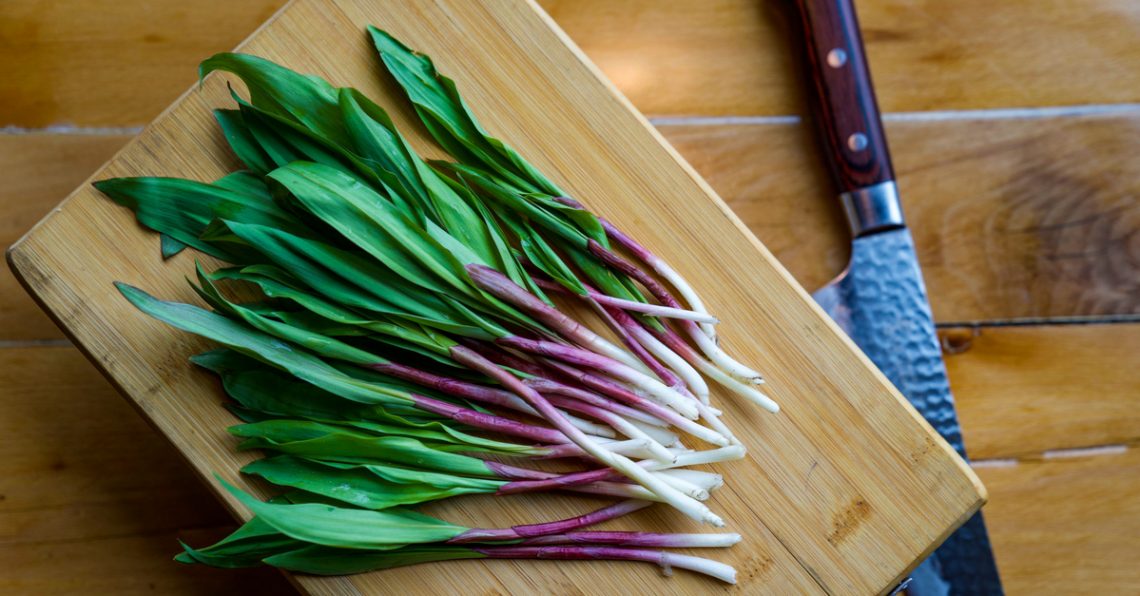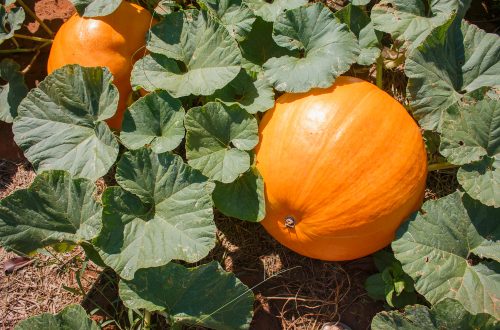
Eating Spring Greens from the Woods
It’s not just crocus and daffodils poking through the ground. Early spring vegetables are soon to be here. Already at some of the local farm stands, you’ll see early greens: lettuces, kale, and spinach, but also broccolini, asparagus, and spring onions.
Liz Knight of Colby Farmstand in Newbury, Mass. says to expect local fiddleheads and asparagus by Mother’s Day. No such luck for ramps, those tasty wild leeks that sometimes appear in some markets in April. Liz says they won’t have them at Colby’s, and others say that obtaining ramps is often chancy, at best. That’s because ramps are foraged, not cultivated. As such, you’ll find them both scarce and expensive, when available. Unless you decide to go hunting for them yourself. My brother-in-law Ted May, who lives near Lake Superior, actually does forage for ramps and loves serving them for springtime dinners. A Wisconsin Master Naturalist, he knows exactly where to find them in the woods nearby.
Growing up in a farming region where asparagus was grown, I was always happy when the first tender young spears were available, and I’d often find them in the fencerows. But like many, I was unfamiliar with ramps and fiddleheads, a new taste sensation for me. Here are a few ideas for enjoying these two spring vegetable treats.
Like leeks, ramps (featured photo above) need to be carefully cleaned. After all, they’re harvested in the muddiest season of the year. Ramps taste like a pungent combination of garlic and onions and can be used as you would spring onions or scallions. Think omelets, tarts, or even fish dishes. Saveur Magazine has a recipe for salmon with green olive and ramp beurre blanc. If you have ramps left over from your initial dish, here’s a recipe for pickled ramps, an easy way to preserve the rest of your treasured bounty.
When it comes to fiddleheads, you’ll need to be selective. First, when purchasing, pick fiddleheads that are small, firm, and tightly furled. Don’t worry about the papery brown chaff, but make sure that the insides are not discolored or starting to unfurl. And, once home, you should consume them within a day or two, as their flavor is volatile. Rinse in cold water, then rub them to remove the chaff. You’ll want to blanch them for about five to 10 minutes. Raw, their taste is a bit unpleasant. After blanching, you’re ready to finish your dish. Think of the same kinds of meals that you’d serve with haricot verts or asparagus, perhaps as an accompaniment to a simple omelet, quiche, or frittata. Or try this Martha Stewart recipe for sautéed fiddleheads. If you’re looking for more of a meal, try serving them with baked or broiled fish. Here are some ideas, from a simple salmon recipe to a more elaborate Indonesian dish of fish cooked in coconut milk with fiddleheads.
The good news is that winter is over, and along with it, the season for all of those wonderful soups and stews we’ve enjoyed … But now, as spring vegetables are starting to appear, how about trying something new? Let’s go look for ramps and fiddleheads. And let me know how you make out.
To comment, please click on “Read in Browser” or on the headline to view the blog on the website. You can log in and comment at the end of the blog to share your thoughts and start a discussion.
If you’d like to share the blog, click on the Facebook icon or one of the others. Thanks!





2 Comments
Chuck Kennedy
In the early 80’s I was fortunate to attend the Ramp Festival in Parkersburg, West Virginia. I ate so many that my sweat glands exuded the garlicky odor so much that the shirt I wore smeled of it.
Tracy May
A-foraging we will go,
wandering to and fro
’til tender ramps abound
heads poking from the ground,
perhaps some fiddleheads too amongst the new green growth.
Inspired by our bro to hunt the woods once mo’,
our thanks, Farmboy, for sharing this spring joy
in wildness sought and found.